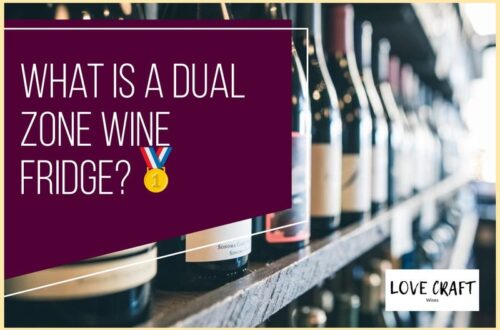Are you tired of guessing whether or not you should be refrigerating your wine?
With so many different types of wine out there, it can be difficult to know what storage method is best for each one. Factors such as temperature, humidity, and light exposure can all affect the taste and quality of your wine, making it important to understand the proper storage methods for each type.
In this article, we will provide you with the in-depth knowledge and detailed analysis you need to properly store your wine.
We will explore the factors that affect wine storage, the temperature requirements for different types of wine, and which types of wines need refrigeration and which ones can be stored at room temperature.
By the end of this article, you will have a broad understanding of how to store your wine to ensure it is at its best when you are ready to enjoy it.
Table of Contents
Factors Affecting Wine Storage
You’ll want to pay attention to some key factors that could make or break your precious wine collection, including storage temperature, humidity, light exposure, and bottle orientation.
The main reason why wine is stored is to allow it to age properly, which requires a stable environment. Wine aging is a natural process that occurs when wine is exposed to oxygen, which can cause the wine to deteriorate if not properly stored. Therefore, wine storage is crucial to preserving the quality of your wine.
One of the most important factors to consider when storing wine is temperature. Wine cellars are the ideal storage solution for wine, as they provide a stable temperature and humidity level. The ideal temperature for wine storage is between 45-65 degrees Fahrenheit, with 55 degrees being the optimal temperature.
This is because if the temperature is too high, the wine will age too quickly, and if it’s too low, the wine will age too slowly. Understanding temperature requirements for wine is essential for ensuring that your wine collection ages properly and maintains its quality over time.
Understanding Temperature Requirements for Wine
Knowing the right temperature for your favorite bottle of vino can make all the difference in unlocking its full potential. Wine temperature is crucial in serving wine at its best taste and aroma.
Here are four temperature guidelines to ensure that you get the most out of your wine:
- Sparkling wines should be served at 40-50°F to preserve their bubbles and freshness.
- Light-bodied white wines should be served at 50-60°F to bring out their acidity and fruity flavors.
- Full-bodied white wines should be served at 60-65°F to enhance their complexity and richness.
- Red wines should be served at 60-70°F to develop their tannins and flavors fully.
By following these temperature guidelines, you can ensure that the wine you serve is at its optimal taste and aroma.
However, not all types of wine require refrigeration. In the next section, we’ll delve into which types of wines need to be refrigerated to maintain their quality.
Types of Wines That Need Refrigeration
If you’re planning a summer picnic with your loved ones, imagine the chilled feeling of a crisp rosé, as you sip it under the sun – that’s why certain wines are best served refrigerated.
Wine storage techniques are crucial in maintaining the taste and aroma of your favorite bottle of wine. Proper wine serving temperatures vary depending on the type of wine, but it’s safe to say that most white wines, rosés, and sparkling wines should be served between 40 to 50 degrees Fahrenheit. This range of temperature preserves the acidity, freshness, and fruity flavors of these wines.
Some specific types of wines that need refrigeration include Sauvignon Blanc, Pinot Grigio, Chardonnay, Riesling, Rosé, and Champagne. These wines are light, delicate, and crisp, and they tend to lose their flavors and aromas when served at room temperature. Refrigeration helps to maintain the integrity of these wines and make them more enjoyable to drink.
On the other hand, red wines like Cabernet Sauvignon, Merlot, Syrah, and Malbec can be served at room temperature or slightly chilled, depending on your preference.
In the next section, we’ll discuss the types of wines that can be stored at room temperature.
Types of Wines That Can Be Stored at Room Temperature
So, you’ve got some red wines that you’re wondering if they can be stored at room temperature, well, the good news is that some of them can be left out of the fridge.
When it comes to wine storage, it’s important to keep in mind that not all types of wine need to be refrigerated. Here are some room temperature options for storing your wine:
-
Light-bodied red wines: Wines like Pinot Noir, Beaujolais, and Chianti can be stored at room temperature for a short period of time, usually up to a week. If you plan on storing them for longer, it’s best to keep them in a cool, dark place.
-
Full-bodied red wines: Wines like Cabernet Sauvignon, Syrah, and Malbec can be stored at room temperature for a longer period of time, usually up to a few years. However, if you live in a warm climate, it’s best to keep them in a cooler place, like a cellar or a wine fridge.
While some types of red wines can be stored at room temperature, it’s important to keep in mind that proper storage is essential to preserving the quality of your wine.
In the next section, we’ll go over some tips for properly storing your wine.
Tips for Properly Storing Your Wine
Proper storage is essential to preserving the quality of your wine, and here are some tips to help you do just that.
First of all, make sure to store your wine away from direct sunlight, which can cause it to age prematurely and develop off-flavors.
A wine rack is a great way to keep your bottles organized and out of harm’s way, as it allows for proper air circulation and helps to prevent sediment from settling in the bottom of the bottle.
Another important factor to consider when storing wine is humidity control. Ideally, wine should be stored in an environment that is between 50-70% humidity, as this helps to prevent the cork from drying out and allows the wine to age properly.
If the humidity is too low, the cork can shrink and allow air to seep into the bottle, which can cause the wine to spoil. On the other hand, if the humidity is too high, it can promote mold growth and damage the labels on your bottles.
Investing in a humidity gauge and a humidifier/dehumidifier can help you maintain the ideal environment for your wine collection.
Frequently Asked Questions
How long can a refrigerated wine be stored before it spoils?
Oh, you fancy wine connoisseur, you! You’ve got your wine cellar all set up and your preservation techniques down pat. But even the most meticulous wine collector can fall victim to the dreaded spoiling of refrigerated wine.
So, how long can a refrigerated wine be stored before it spoils? Well, it all depends on the type of wine and how it’s been stored. Factors such as temperature, humidity, and light exposure all play a role in wine storage.
For example, white wines and rosés generally last about 3-5 days in the fridge once opened, while red wines can last up to a week. However, if you’ve properly stored your wine in a cool, dark place with the right humidity levels, it can last for years.
So, if you want to avoid the disappointment of spoiled wine, make sure you’re storing it correctly and keeping an eye on those expiration dates. Cheers!
Can wine be stored in the freezer for preservation?
If you’re looking to preserve your wine for a longer period of time, you may wonder if storing it in the freezer is a good option.
While it’s possible to store wine in the freezer, it’s not always the best choice for wine preservation. The extreme cold of the freezer can actually damage the wine’s flavor and aroma. Additionally, freezing can cause the wine to expand and potentially break the bottle.
If you must freeze wine, it’s best to do so in small portions and only for short periods of time. Overall, it’s better to stick with traditional methods of wine preservation, such as storing it in a cool, dark place or in a wine fridge set to the appropriate temperature.
What’s the ideal temperature for serving red wine?
Red wine is best served at room temperature, but what’s the ideal temperature? As the old adage goes, "a little knowledge is a dangerous thing." So let’s dive into the in-depth knowledge of red wine pairing.
The ideal temperature for serving red wine varies depending on the type of red wine. Generally, lighter-bodied red wines like Pinot Noir and Beaujolais should be served slightly chilled, around 55-60°F. Medium to full-bodied red wines like Merlot and Cabernet Sauvignon should be served at a slightly warmer temperature, between 60-65°F. This allows the wine to fully express its complex flavors and aromas.
With this detailed analysis, you can confidently serve your red wine at the ideal temperature and enjoy the full experience of your chosen bottle.
Does the type of wine glass affect the taste of the wine?
When it comes to drinking wine, the type of wine glass you use can actually affect the taste and overall sensory experience.
Wine glass shapes can vary widely, with some designed specifically for red wines, white wines, or sparkling wines.
A good wine glass should allow for proper aeration and distribution of the wine, while also highlighting the specific flavors and aromas of the wine.
For example, a wider bowl can allow for more aeration and showcase the complexity of a red wine, while a smaller bowl can concentrate the aromas of a white wine.
Ultimately, investing in quality wine glasses can enhance your overall enjoyment of wine and make for a more nuanced tasting experience.
How important is the cork in wine storage?
When it comes to wine storage, the cork preservation is crucial in preventing wine oxidation. You might be surprised to know that the cork plays a significant role in preserving the quality of the wine.
It acts as a barrier between the wine and the outside air, blocking unwanted elements from entering the bottle. When the cork is not preserved, it can dry out, crack, and allow air to seep into the bottle, causing the wine to spoil quickly.
Proper cork preservation is essential to ensure that the wine remains fresh and delicious for years to come.
Conclusion
Congratulations! By now, you’ve learned about the factors that affect wine storage and the temperature requirements for different types of wines.
You’ve also discovered which types of wines need to be refrigerated and which ones can be stored at room temperature. Remember, proper wine storage is essential to maintain its quality and taste.
Whether you’re a casual wine drinker or a serious collector, it’s crucial to store your wine correctly to preserve its flavor and aroma. Keep in mind that temperature, humidity, and light are the most critical factors to consider when storing your wine.
So, next time you purchase your favorite wine, make sure you know how to store it properly. Following the tips and guidelines mentioned in this article will help you keep your wine fresh and delicious.
Cheers to a perfect glass of well-stored wine!





